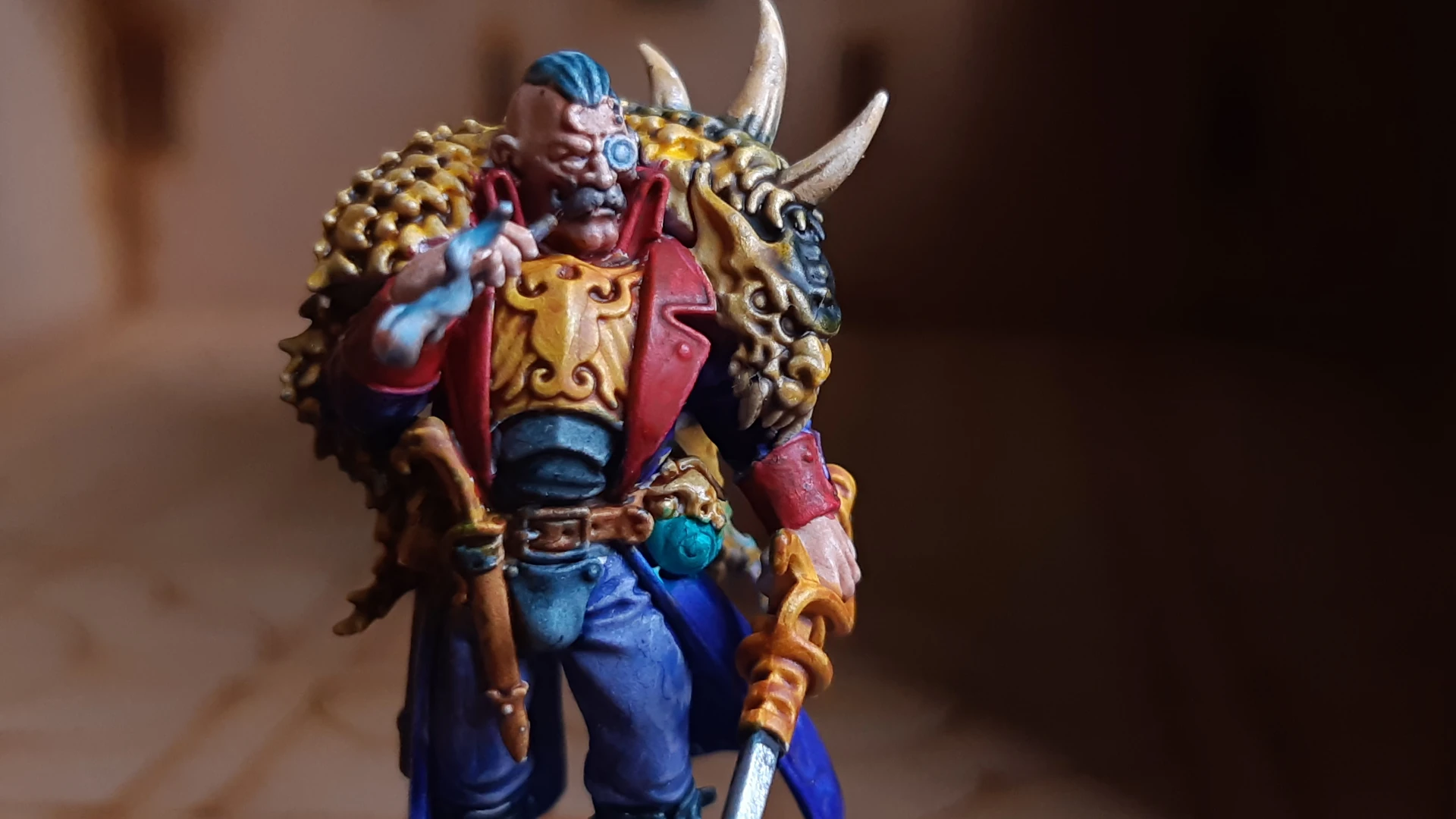I remember when I first learned about washes. It was a Youtube video demonstrating a dip wash, where you take your entire painted miniature and just dip it into a tin of watery paint, shake it off, and let it dry. I wasn't painting miniatures yet, myself, but it made an impression on me, because the before and after shots spoke for themselves. As irrational as it seemed, apparently dipping a meticulously painted miniature into a bucket of super-special-paint actually made it look amazing...? I've not tried a dip wash and don't intend to, and in fact since switching to contrast paint I hardly find a use for washes.
But I still do use washes in some cases. Here are 3 reasons that washes like Agrax Earthshade and Nuln Oil are still must-have paints. Er, washes.
1. I've got a fever and the only prescription is more contrast
I love high contrast paints like Citadel Contrast and Vallejo Xpress Color because they mostly eliminate the need for second layers and washes. The dark pigments sink into recesses, the high points are bright, and the mid-range is vibrant. These paints have changed the way I paint. They've made me faster and the end result is better than it ever was with traditional acrylics. I'm a no-skill painter, so the fact that friends (who also aren't professional art critics, to be fair) have actually given me compliments on one or two of my miniatures. At the very least, they don't laugh at them, which is good enough for me.
But sometimes "high contrast" isn't quite as high contrast as I'd like. A perfect example is with Imperial (or was it Nuclear?) Yellow from Vallejo. It's a beautiful shade of yellow, and I thought it might look really nice for an animal pelt that one of my miniatures had draped over his shoulders.
Used it, hated it. It turned the animal pelt into what may as well have been a big formless banana peel. A little Agrax Earthshade, and the spiky fur or scales of the beast were accentuated, the yellow darkened, and the miniature was saved.

2. Tone it down
I'd painted some demons with a red that I felt good about at the time. After all, devils and demons are classically red, everybody knows that.
They dried overnight and I took a look at them with fresh eyes the next day, and I realised that actually the red was way too bright. We're talking cartoon Satan red. I do think it could have worked, had I played it off as "that comic book vibe" but I didn't really want that for this batch of evil minions.
I coated them in Agrax Earthshade, going pretty light on the crevices and focusing on the flat surfaces. It wasn't contrast I needed, in this case, it was just an even coating of something darker than bright red. As expected, the wash brought down the brightness of the red demon flesh to something that looked a little more organically infernal.
3. Make it dirty
Despite not leaving my batch of demons as bright red beacons of evil, I mostly do really like the comic book look for my miniatures. I think it's easy to get carried away with grim darkness and post apocalyptic wasteland browns, to the point that in the end all your miniatures look the same. And, worse still, they end up looking bland on the tabletop. Your army becomes a river of beige or black. So I like vibrant colours on my miniatures.
However, sometimes a miniature really does beg to look dirty. When the story of a miniature in your game says they've been living in a sewer their entire lives, or fighting in a trench, or journeying through Hell, it just feels weird when they appear on the tabletop looking bright and chipper.
Bonus: Cover-up
To be perfectly honest, sometimes a good wash acts as a great concealer. When I'm especially unhappy with a paint job on a miniature, I usually find that applying a wash makes me forget all the imperfections my mind is insisting upon seeing. It's a cheap trick, and it's probably the "wrong" answer to the problem, but it works.
A wash adds a little shadow around the edges, where imperfection tends to happen the most, and it can give the illusion of colour blending. I used to rely on washes for this a lot more back when I first started painting. When I discovered Citadel Contrast paints, I found myself not needing that boost because the Contrast paints do a great job of looking amazing no matter what.
Sometimes, even Contrast or Xpress Color can't make up for my indiscretions. But a wash can.
Agrax or Nuln
Agrax Earthshade is a "warm" colour because it has a silght amber tint to it, so it's good for organic materials, while the "cooler" Nuln Oil is great for metal or some alien fleshtones. There are other options, too, like Mortarion Grime, which is a sort of warm mucous that's great on zombies and other vile monsters. And obviously there are other brands, but Citadel is the one that's easy for me to get.
Washes are useful, whether you use normal acrylics or high contrast paints. Keep them around.
Header photo by Seth Kenlon.